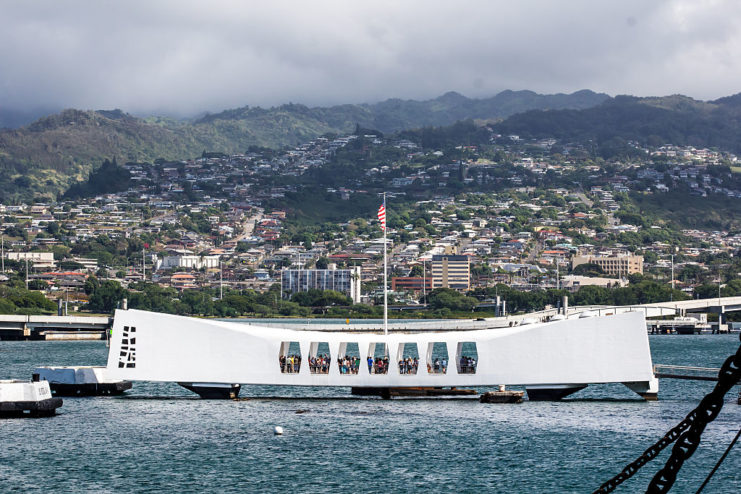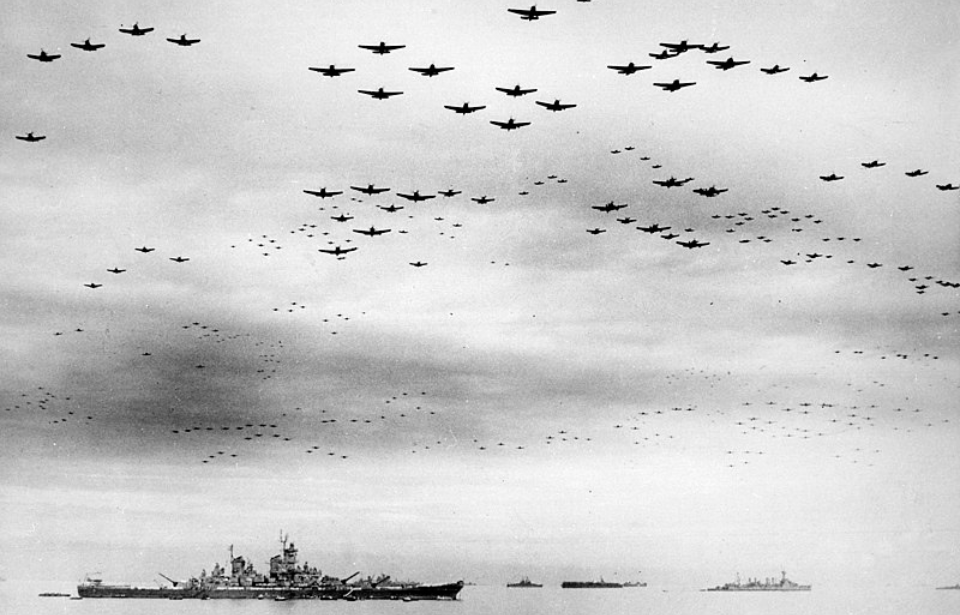Wanting to counter Japan

During the 1930s, a period of peace for the United States, military leaders anticipated the possibility of conflict with Japan. In response, the Navy was assigned the task of developing a new battleship design. The goal was to create a vessel capable of challenging Japan’s Kongō-class battlecruisers.
After the First World War, global powers agreed to the Washington Naval Treaty, which imposed restrictions on the size of new ships. This was followed by the Second London Naval Treaty, which Japan declined to sign. This led to further negotiations that permitted the US to construct battleships up to 45,000 tons, an increase from the earlier limit of 36,000 tons.
Construction of the USS Missouri (BB-63)
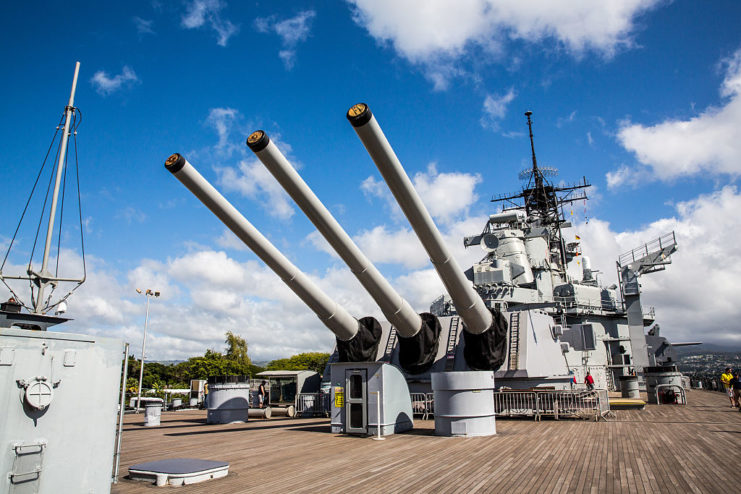
Powered by advanced steam turbines, the battleship was capable of reaching speeds up to 32.5 knots, or roughly 37 miles per hour. Her formidable armament included nine massive 16-inch guns as the main battery, supported by twenty 5-inch dual-purpose mounts designed to strike both aerial and surface targets. To bolster her defenses against aircraft, she also carried twenty 40 mm Bofors guns along with forty-nine 20 mm anti-aircraft guns.
After initial trials in Chesapeake Bay, Missouri continued on to the Hunters Point Naval Shipyard in San Francisco, where she underwent key alterations to ready her for service as a fleet flagship.
Site of the Japanese surrender
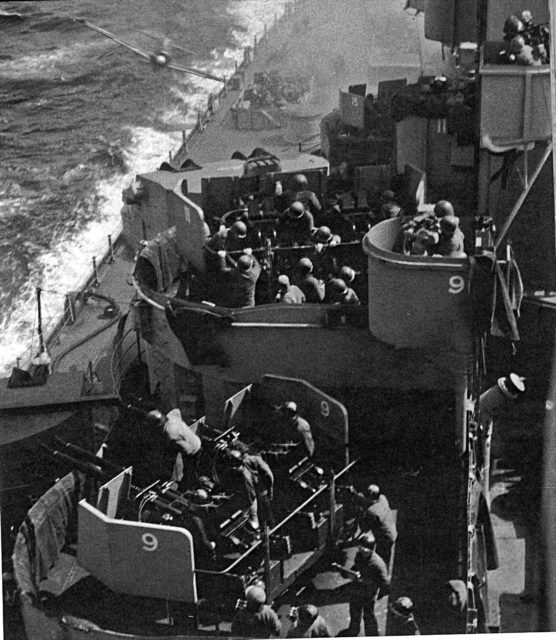
After its commissioning, the USS Missouri was deployed overseas as part of Task Force 58, reaching the waters near Tokyo in January 1945. The battleship quickly joined an assault on the Japanese city, employing her armaments to deliver anti-aircraft support. Subsequently, she continued carrying out strikes against Japan, including operations during the Battle of Iwo Jima.
Shortly before the Battle of Okinawa, Missouri and two other U.S. ships were reassigned to Task Force 59, tasked with bombarding Okinawa’s southern region. This mission aimed to distract Japanese forces from the expected invasion on the island’s western side. In April 1945, Missouri was struck by a kamikaze aircraft, sustaining only minor damage. A few days later, another kamikaze pilot targeted the ship, causing injuries to two crew members.
On September 2, 1945, Missouri hosted the Japanese surrender ceremony. The formal event was attended by Gen. Douglas MacArthur and Adm. Chester Nimitz, with Japanese Foreign Minister Mamoru Shigemitsu representing Japan.
Service during later US-involved conflicts
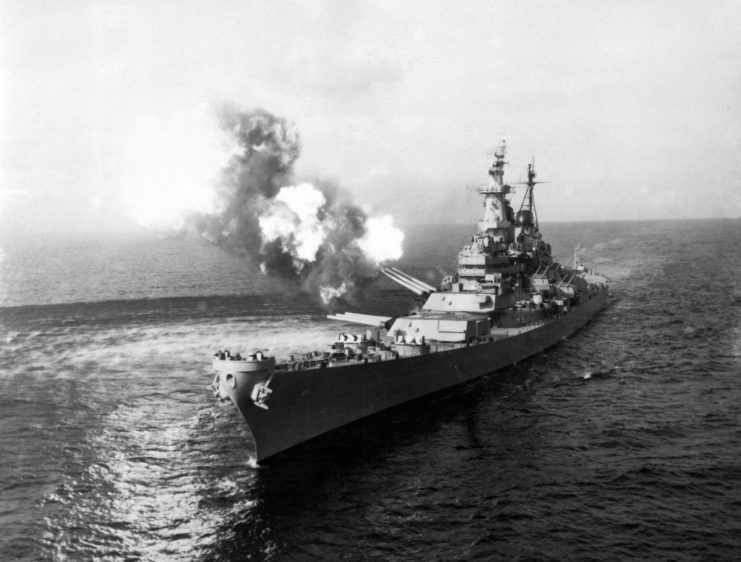
The USS Missouri was called back into service in 1950 with the outbreak of the Korean War. Initially assigned to the Pacific Fleet, she became the first American battleship to arrive in Korean waters, where she carried out shoreline bombardments and served as an escort for aircraft carriers throughout the conflict.
In 1955, Missouri was decommissioned and sent to Puget Sound. She remained moored in Seattle for several decades, becoming a popular tourist destination – at the height of her time there, she attracted approximately 250,000 visitors annually.
In 1984, under the Reagan administration, Missouri was reactivated as part of a fleet expansion aimed at countering the Soviet Union. She was modernized with cutting-edge weapons and technology, including four Mk 141 quad cell launchers for RGM-84 Harpoon anti-ship missiles and four Phalanx 0.8-inch .76-caliber Close-In Weapon Systems. Also, eight Mk 143 Armored Box Launcher mounts for Tomahawk missiles were installed.
Three years later, Missouri was deployed to Kuwait as part of Operation Earnest Will, outfitted with additional 25 mm chain guns and 40 mm grenade launchers. In January 1991, she arrived in the Persian Gulf, in support of Operation Desert Storm, where her mission involved clearing sea mines and providing naval gunfire support.
USS Missouri‘s (BB-63) retirement and legacy
